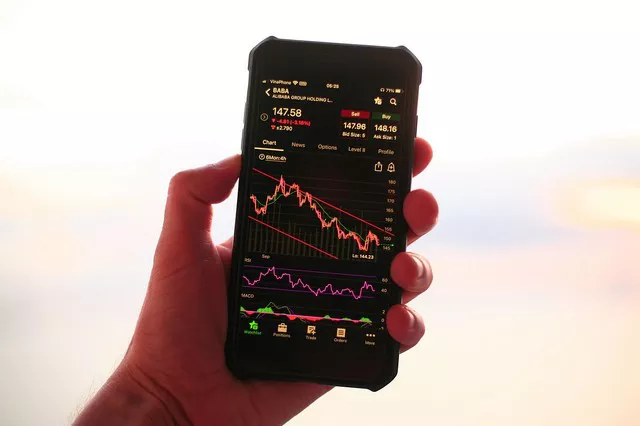Navigating the world of commodities trading requires a keen understanding of various markets, and one segment that has gained significant traction is the trading of ICE futures. As a unique and dynamic arena, ICE futures offer traders the opportunity to engage in the price discovery and risk management of commodities ranging from energy products to soft commodities.
Understanding ICE Futures: An Overview
ICE futures refer to financial contracts traded on the Intercontinental Exchange (ICE), a global marketplace known for its diverse range of commodity and financial products. Unlike traditional futures exchanges, the ICE platform facilitates trading in energy, agriculture, currency, and equity index futures. Traders engage in ICE futures to hedge against price fluctuations, speculate on market movements, or gain exposure to specific commodities without the need for physical delivery.
Navigating the ICE Trading Platform
Before delving into the intricacies of trading ICE futures, it is crucial to become familiar with the ICE trading platform. The platform provides a user-friendly interface for executing trades, accessing market data, and managing risk. Traders can explore various tools and features, such as real-time price quotes, technical analysis charts, and order placement capabilities. Additionally, understanding the contract specifications, expiration dates, and margin requirements for different ICE futures contracts is essential for making informed trading decisions.
Researching and Analyzing ICE Markets
In the fast-paced world of ICE futures trading, information is key. Successful traders invest time in thorough market research and analysis to identify potential opportunities and risks. Keeping abreast of global economic indicators, geopolitical events, and commodity-specific news can provide valuable insights. Technical analysis, using charts and indicators, helps traders identify trends and potential entry or exit points. A combination of fundamental and technical analysis forms a robust strategy for navigating the complexities of ICE futures markets.
Risk Management Strategies for ICE Futures Trading
Trading ICE futures involves inherent risks, and successful traders prioritize risk management to safeguard their capital. Implementing stop-loss orders, diversifying portfolios, and understanding position sizing are crucial elements of an effective risk management strategy. Traders should also be aware of the leverage inherent in futures trading, as it amplifies both gains and losses. Careful consideration of risk-reward ratios and setting realistic profit targets contribute to a disciplined and sustainable approach to ICE futures trading.
Choosing the Right ICE Futures Contracts
Given the diverse range of commodities available on the ICE platform, traders must carefully choose the ICE futures contracts that align with their trading objectives and risk tolerance. Whether focusing on energy commodities like Brent crude oil or soft commodities like coffee and sugar, each market has its unique dynamics. Conducting thorough research on the supply and demand factors, seasonal trends, and geopolitical influences of specific commodities aids in selecting the most suitable ICE futures contracts for trading.
Developing a Trading Plan for ICE Futures
A well-defined trading plan is the cornerstone of success in ICE futures trading. This plan should outline clear goals, risk tolerance, and strategies for entering and exiting trades. Traders must specify the criteria for selecting ICE futures contracts, the timeframe for holding positions, and the risk management rules to be followed. Regularly reviewing and updating the trading plan based on evolving market conditions is essential for adapting to changing dynamics and optimizing performance.
Executing Trades and Order Types on ICE
Executing trades effectively on the ICE platform requires a solid understanding of order types. Traders can place market orders for immediate execution at the prevailing market price or use limit orders to specify the maximum or minimum price at which they are willing to buy or sell. Stop orders, including stop-loss and take-profit orders, help manage risk and lock in profits automatically. Becoming proficient in using different order types enhances a trader’s ability to navigate the fast-paced environment of ICE futures trading.
Staying Informed about Regulatory Changes
The landscape of commodities trading is subject to regulatory changes that can impact ICE futures markets. Traders need to stay informed about regulatory developments, exchange rules, and any changes in margin requirements. Compliance with regulatory standards is crucial for maintaining the integrity of the trading process and ensuring a fair and transparent marketplace. Additionally, understanding the implications of regulatory changes on market liquidity and trading conditions is vital for making informed decisions.
Leveraging Technology in ICE Futures Trading
In the digital age, technology plays a pivotal role in ICE futures trading. Traders can leverage advanced trading platforms, algorithmic trading tools, and automated strategies to enhance efficiency and accuracy. Access to real-time market data, news feeds, and analytical tools empowers traders to make informed decisions swiftly. Embracing technology also allows for backtesting trading strategies, identifying patterns, and adapting to market trends with agility.
Continuous Learning and Adaptation
Successful ICE futures traders recognize the importance of continuous learning and adaptation. Markets are dynamic, and staying ahead requires staying informed about industry trends, economic indicators, and global events. Engaging in professional development through webinars, conferences, and networking with fellow traders fosters a deeper understanding of market dynamics. Adapting to changing conditions and being open to refining trading strategies contribute to long-term success in ICE futures trading.
Conclusion
In conclusion, ICE futures trading presents a unique and exciting opportunity for those seeking to engage in the dynamic world of commodities markets. From understanding the basics of the ICE platform to developing a comprehensive trading plan, managing risk, and leveraging technology, traders can position themselves for success. By staying informed, continuously learning, and adapting to market conditions, individuals can navigate the complexities of ICE futures trading with confidence and skill, unlocking the potential for financial growth and success in this dynamic arena.


